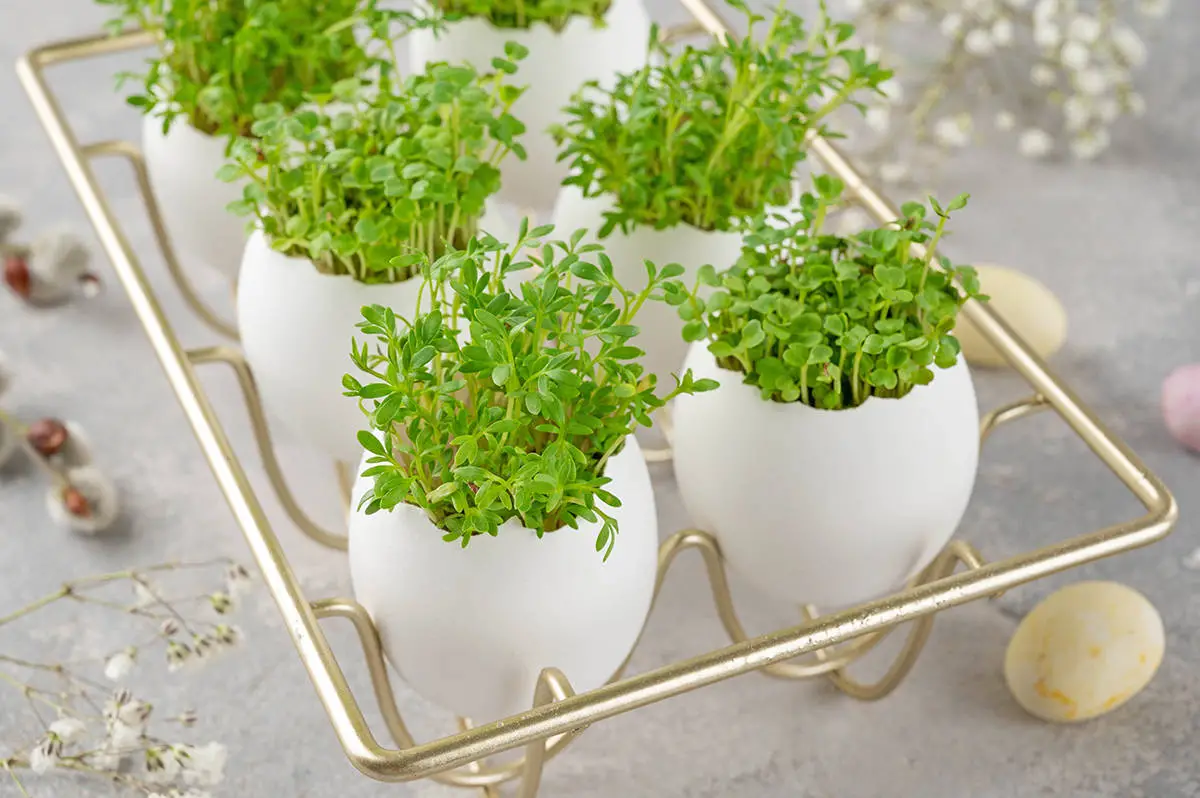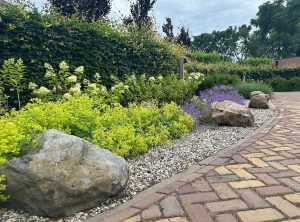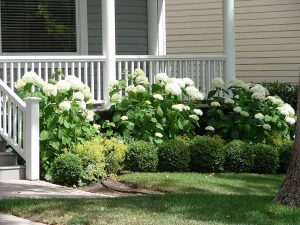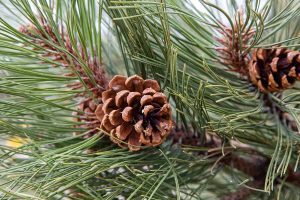After breakfast, don’t toss those eggshells! Crushed eggshells can be a gardener’s best friend, offering a rich source of calcium to help your plants flourish. Whether you’re dealing with blossom end rot in tomatoes or wanting to fortify your potted plants, eggshells provide a sustainable, cost-effective solution. Here’s how to prepare and use them to boost plant health and deter pests.
Table of Contents
Benefits of Eggshells for Plants
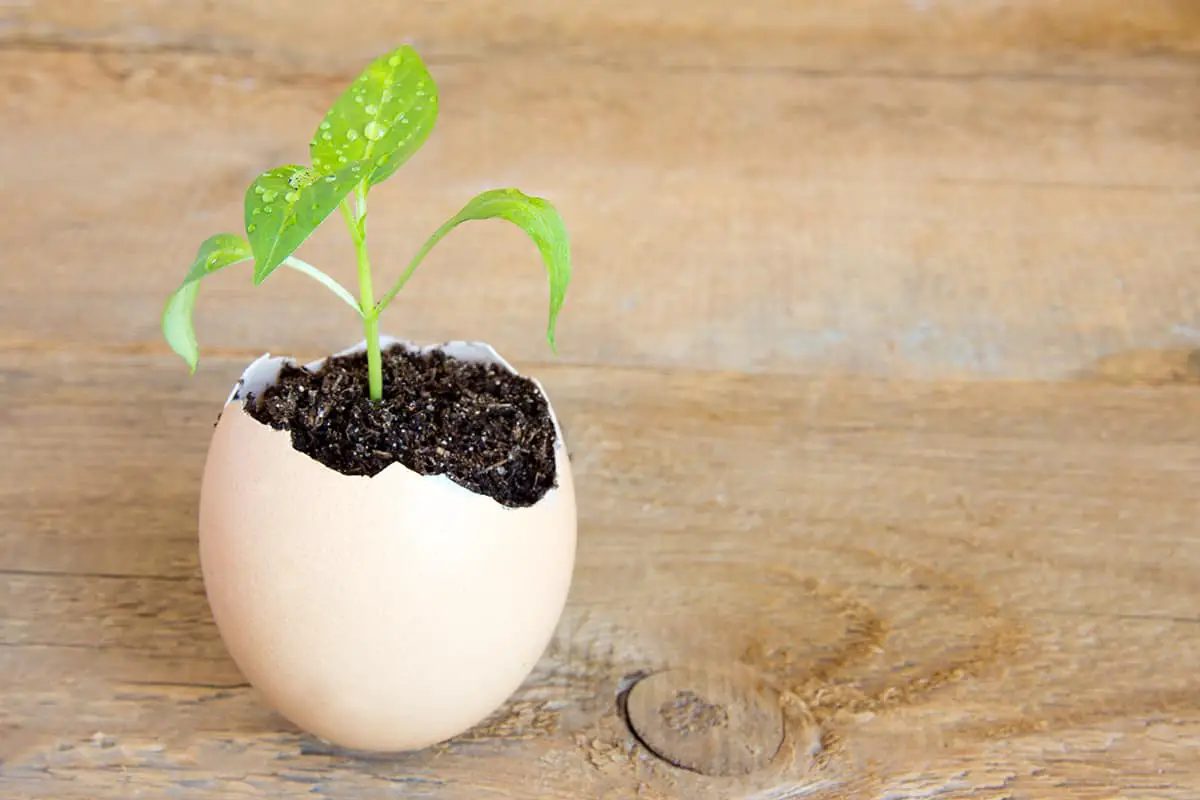
Eggshells can improve your plants’ overall health. They are rich in calcium, an essential nutrient for plant growth and development. Calcium strengthens cell walls and ensures strong root development. You can use eggshells in your garden to enhance soil structure and promote healthy plant growth.
Sprinkle these eggshell fragments around your plants or incorporate them into the soil to boost calcium levels. This method helps to avoid issues like blossom end rot in tomatoes, which happens due to calcium deficiency.
Eggshells also benefit your garden’s soil structure when added to compost. The high calcium content in eggshells makes them a valuable addition to worm bins. Worms require calcium for their exoskeleton, and they thrive in environments with ample calcium. Adding crushed or powdered eggshells to your compost increases the calcium levels in the resulting organic matter, making it an ideal soil amendment to support healthy plant growth.
Moreover, eggshells can act as a natural deterrent for pests like slugs and snails. The sharp edges of crushed eggshells are uncomfortable for these pests to crawl on. By spreading eggshells around the base of your plants, you create a physical barrier that can protect your garden from slugs and snails without using chemicals.
Preparing Eggshells for Use
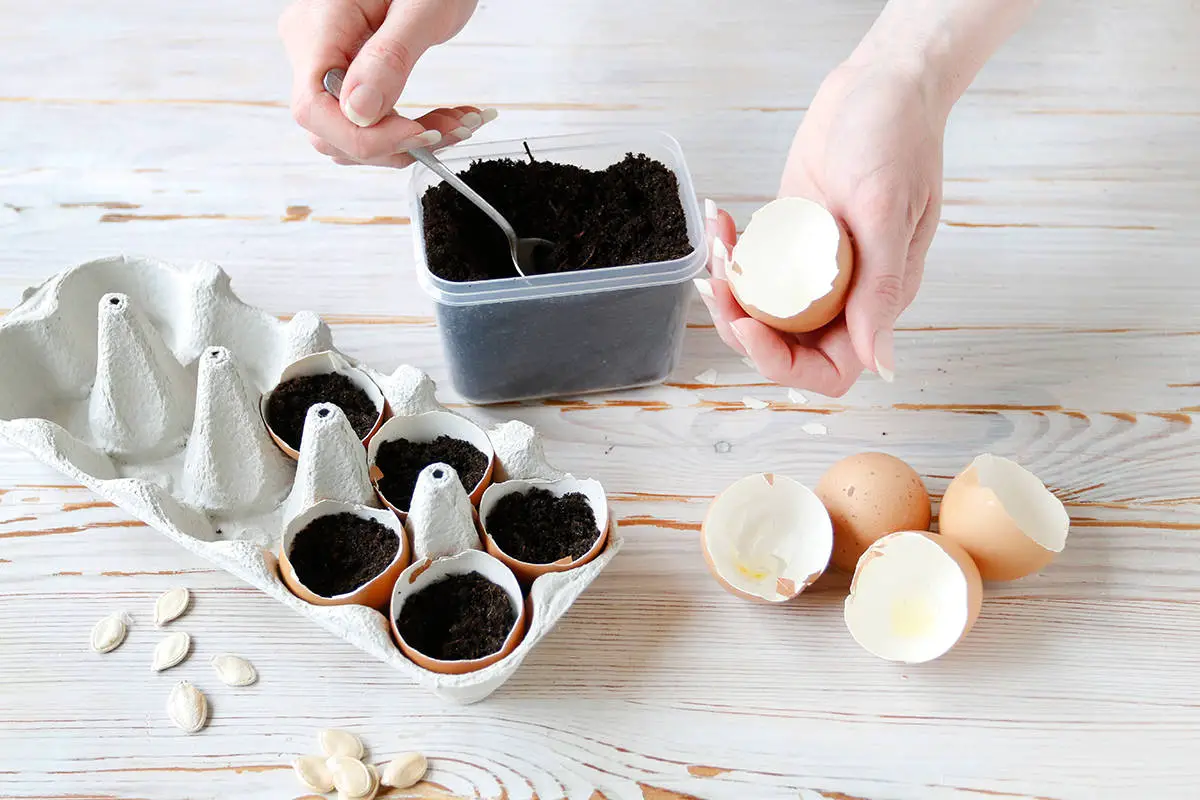
Cleaning Eggshells
Start by removing the remaining egg contents in the shells. Rinse them thoroughly under running water, making sure all residue is removed. This step is essential to prevent the possibility of salmonella contamination from raw eggs.
Drying Eggshells
After cleaning the shells, let them dry completely. You can put them on a towel or paper towels, then place them in a well-ventilated area or under direct sunlight. The drying process usually takes a few hours or even a day, depending on the humidity. Fully dried eggshells will become brittle, making them easier to crush and grind.
Crushing Eggshells
Once the eggshells are dried, you can move on to the crushing process. Break the shells into smaller pieces using your hands or a rolling pin. Crushed eggshells provide a slow-release form of calcium to the soil, which is beneficial for plants. Smaller pieces also speed up the decomposition process in compost piles.
Grinding Eggshells into Powder
For a more immediate source of calcium for your plants, consider grinding the eggshells into a fine powder. Use a coffee grinder, blender, or mortar and pestle to turn them into a powder-like consistency. According to Illinois Extension, finely ground eggshells yield the quickest results. Keep in mind the importance of avoiding excessive amounts, which may cause imbalances in soil nutrients.
Different Ways to Use Eggshells for Plants
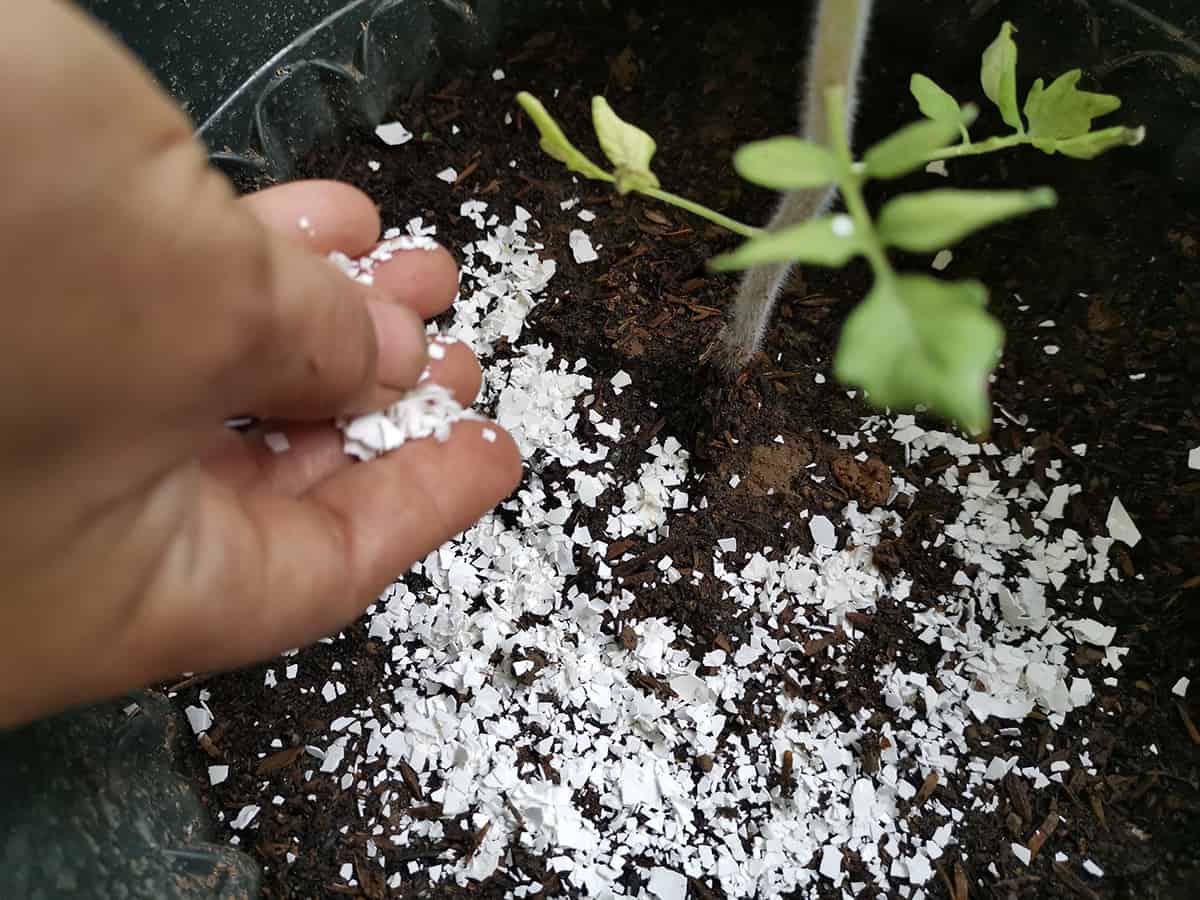
As Fertilizer
Eggshells are a great natural fertilizer. You can simply crush them and sprinkle them around your plants. This way, they will gradually release essential nutrients like calcium and potassium, improving soil health and plant growth.
In Compost
Adding eggshells to your compost pile is another useful method. It is important to crush them properly beforehand to speed up the process. Eggshells provide critical nutrients for both soil organisms and plants.
To Deter Pests
Scattering crushed eggshells around your plants can help keep pests like slugs and snails at bay. The sharp edges of the eggshells can deter these pests from approaching your plants, protecting them from damage.
As a Seed Starting Pot
Using eggshells as seed starting pots is both eco-friendly and nutrient-rich. Simply fill half of an eggshell with soil and plant your seeds inside. Once the seedlings are ready to be transplanted, gently break the shell and place it in the ground along with the plant, providing the roots with essential nutrients.
For Soil pH Adjustment
Eggshells can also help modify your soil’s pH level. If your soil is too acidic, adding a generous amount of crushed shells will increase its alkalinity. This can be particularly helpful for plants that prefer a more neutral pH. Simply test your soil periodically and adjust the amount of eggshells accordingly.
Application Methods
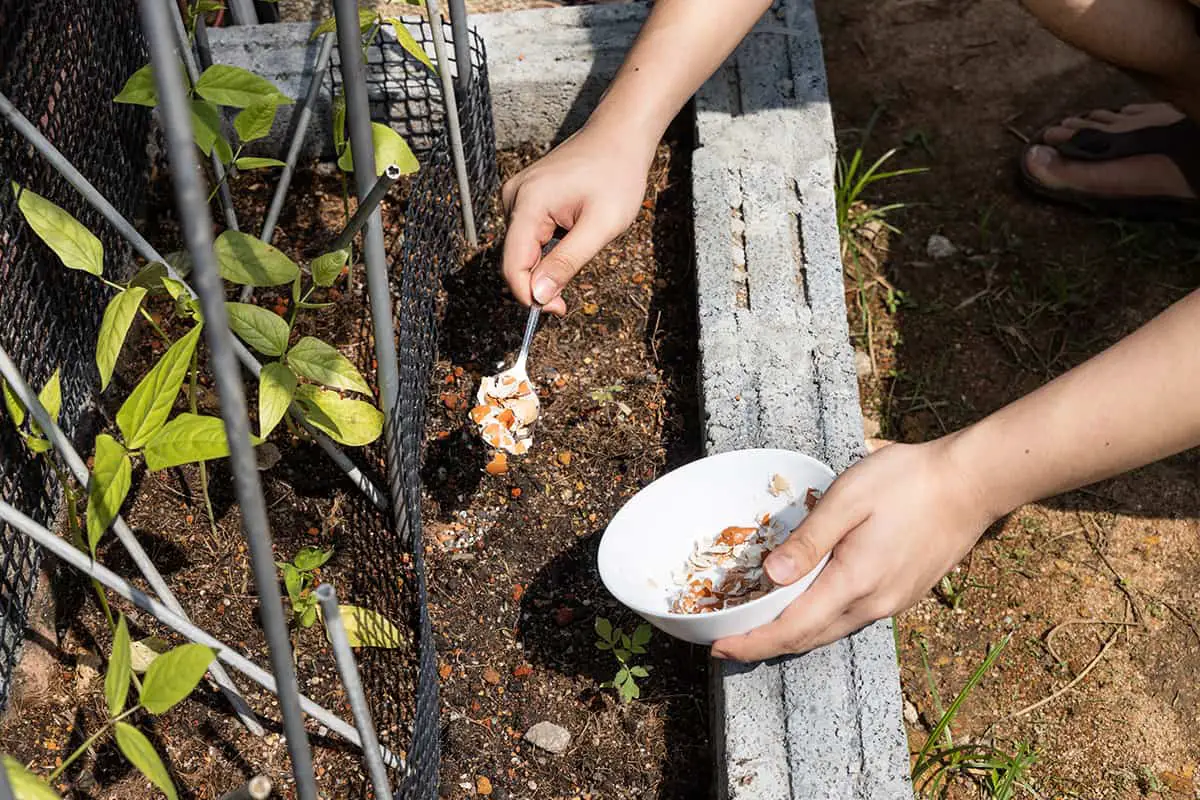
Directly to the Soil
Crush eggshells into small pieces and simply sprinkle them onto the soil surface. This direct method allows the calcium in the shells to gradually release into the soil, benefiting your plants.
As a Side Dressing
Another way to apply eggshells is by side dressing. First, crush the shells into a fine powder or small particles. Then, carefully apply the eggshell mixture around the base of your plants, avoiding direct contact with stems or leaves. This technique encourages healthier plant growth by providing an easily accessible calcium source.
Mixed into Potting Soil
For potted plants, mix crushed eggshells into your potting soil before planting. This helps provide a steady source of calcium as the plants grow, leading to stronger roots and a better overall growth rate.
In Watering Cans
You can also dissolve eggshells in water to create a nutrient-rich solution for your plants. Crush the eggshells into small pieces and soak them in water for a few days. Once the solution is ready, pour it carefully around your plants, making sure to avoid leaves. This eggshell water solution can be applied every two weeks to give your plants a steady supply of calcium.
Safety Considerations
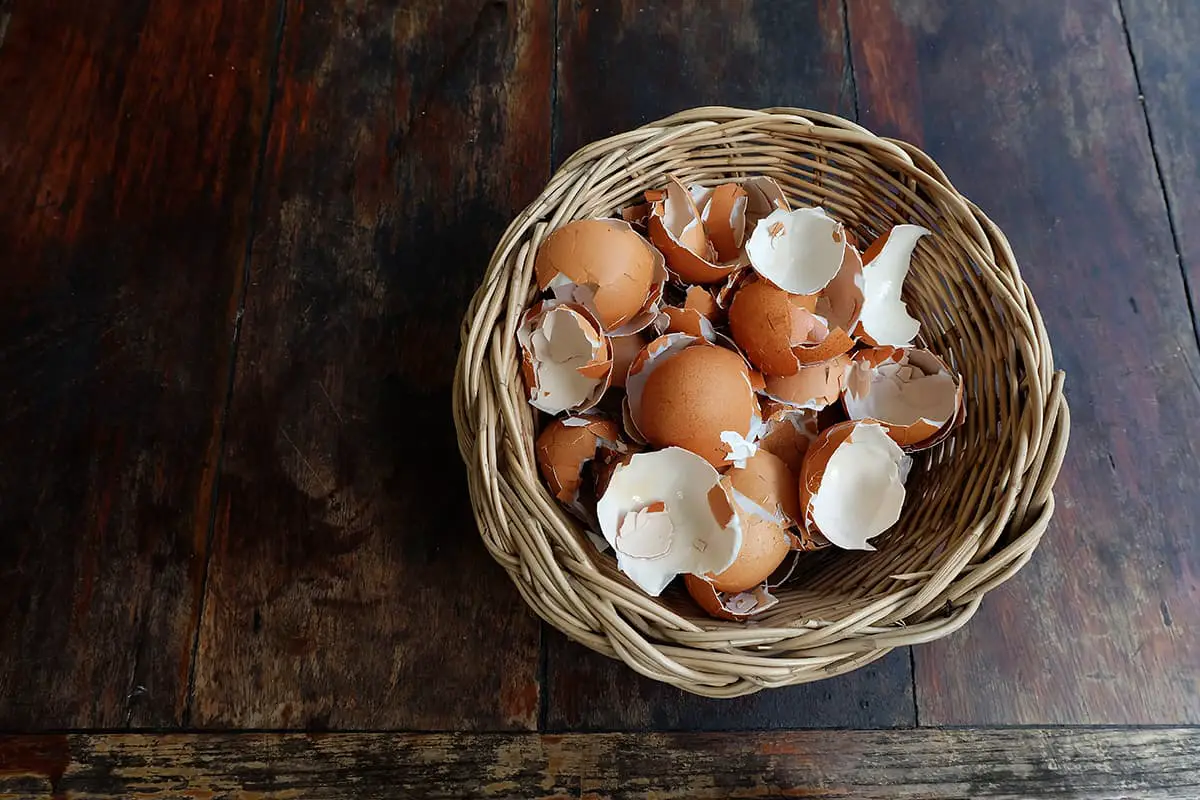
Avoiding Overuse
When using eggshells for your plants, it’s essential to prevent overuse. Excessive eggshell application may raise soil calcium levels too high, causing harm to your plants. With this in mind, apply a moderate amount of crushed eggshells, about half a cup per small garden bed or potted plant, ensuring that they’re evenly distributed across the soil’s surface. Remember to ground them to a fine powder for faster results.
Pet Safety
Keeping your pets safe is crucial when using eggshells in your garden. Some pets may consume eggshells, potentially leading to discomfort or other issues. Supervise your pets closely when they’re near the treated areas, or consider placing barriers to limit their access. If you notice any unusual behavior or symptoms in your pets after contact with eggshells, consult your veterinarian immediately.
Long-Term Benefits and Drawbacks
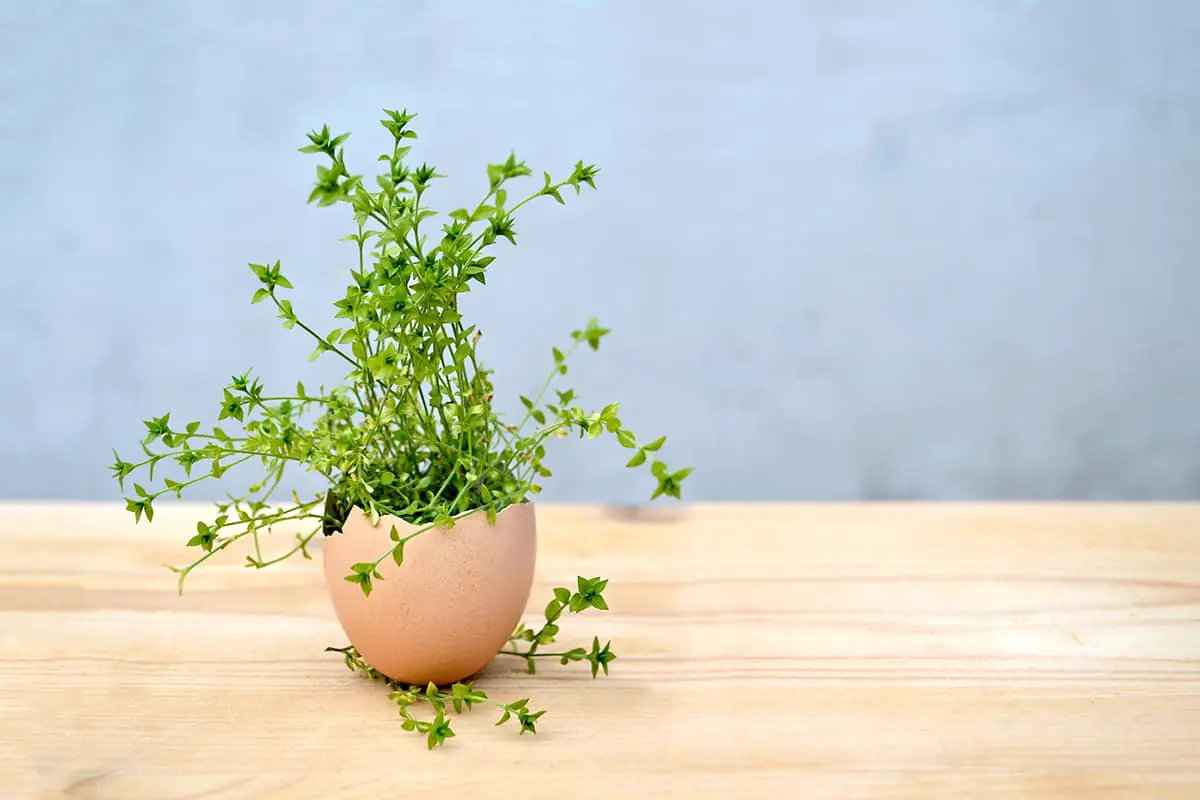
Introducing eggshells to your plants can provide valuable nutrients for them. In the long run, this addition can boost the health of your plants. Eggshells, when added to the soil, offer a calcium-rich supplement, promoting robust cell walls and improving overall plant strength.
However, it’s important to address concerns regarding salmonella bacteria. Don’t worry, though – by washing and drying the eggshells before crushing them, you’ll minimize the risks related to bacteria. Adding crushed eggshells to compost piles or directly into the soil can contribute to a balanced ecosystem that fosters plant growth.
One potential drawback of using eggshells is their slow decomposition rate. Since they break down over time, a quicker alternative is to grind them into a fine powder. This method offers faster results and allows plants to access the nutrients more efficiently.
Comparing Eggshell Use to Commercial Products
When you think about supplying your plants with essential nutrients, eggshells may come to mind as a cost-effective and eco-friendly alternative to commercial products. In this section, we will compare the benefits of using eggshells with commercial fertilizers and amendments.
Eggshells are primarily made up of calcium carbonate, which contributes to the calcium content in the soil. This mineral is essential for plants, helping them build sturdy cell walls and maintain overall growth. In contrast, commercial fertilizers often contain a mixture of nitrogen, phosphorus, and potassium, known as N-P-K. These products may not directly supply calcium, depending on their formulation.
While commercial fertilizers provide nutrients in a readily available form, the soil’s microorganisms need to decompose eggshells before the calcium becomes accessible to plants. This process can take some time, especially when the eggshells are not finely ground. On the other hand, adding eggshells to compost facilitates their decomposition, making it a slow-release source of calcium for your plants.
Another advantage of using eggshells is their ability to neutralize acidic soil. Although they are not as efficient as commercial lime products, they can still help maintain a balanced soil pH when used in moderate quantities. On the other hand, commercial lime products contain higher concentrations of calcium carbonate and work more quickly in adjusting soil pH.
FAQs about Eggshells and Plant Growth
How often should I apply crushed eggshells to plants?
You can apply crushed eggshells to your plants about every two weeks. Two cups of eggshell solution per plant are generally enough to ensure proper calcium levels.
Are eggshells effective against blossom end rot?
Unfortunately, eggshells are not a reliable solution for preventing blossom end rot. Although they provide calcium, factors like uneven watering and high humidity can still contribute to this condition.
Should I use eggshells in compost?
Yes, adding eggshells to compost is beneficial. They are a rich source of calcium and other essential nutrients that can enhance the compost’s output. Remember to crush the eggshells before adding them to compost.
